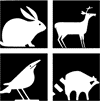Wildlife Damage Management, Internet Center for
Date of this Version
2005
Document Type
Article
Abstract
The Animal Health Board (AHB) is the agency responsible for controlling bovine tuberculosis (Tb) in New Zealand. In 2000, the AHB embarked on a strategy designed to reduce the annual period prevalence of Tb infected cattle and farmed deer herds from 1.67% to 0.2% by 2012/13. Under current rules of the Office International des Epizooties (OIE) this would allow New Zealand to claim freedom from Tb. The epidemiology of Tb in New Zealand is largely influenced by wildlife reservoirs of infection and control of Tb vector populations is central to the elimination of Tb from New Zealand’s cattle and deer herds. The AHB has classified New Zealand’s land area into Vector Risk Areas (VRAs) where Tb is established in wildlife (currently 39%) and Vector Free Areas (VFAs) where the disease is not established (61%). Within the VRAs the introduced Australian brushtail possum (Trichosurus vulpecula) is the primary wildlife maintenance host and the main source of infection for domestic cattle and deer herds. Southland is a region of New Zealand with a long history of wildlife associated Tb. Progress in reducing infected herd numbers has been impressive in recent years, primarily due to an intensive possum control program. As a result of this reduction, the focus is now shifting to that of providing increasing levels of confidence that Tb is absent from the remaining susceptible wildlife. High levels of confidence of Tb freedom in wildlife will allow the AHB to reduce the wildlife control programs and ultimately cease control altogether, with minimal risk of Tb reemerging. This paper examines the strategies being utilized to provide that confidence. The types of data, the format in which it is collected and the methods of analysis and review are outlined.



Comments
Published in Proceedings of the 11th Wildlife Damage Management Conference (D.L. Nolte, K.A. Fagerstone, Eds). 2005.